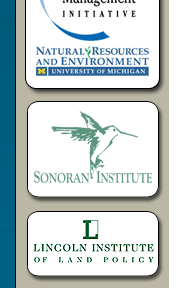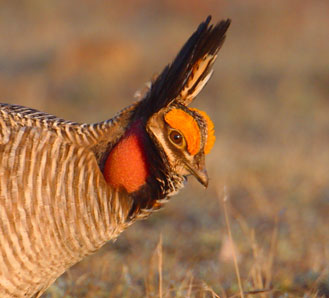


|
Southeast New Mexico Working Group Precluding Endangered Species Listing by Integrating Conservation and Livelihoods Southeast New Mexico is the traditional home of the striking and unique lesser prairie chicken, a bird that has experienced massive population declines over the past century. This portion of the state, consisting of 1.2 million acres of Bureau of Land Management (BLM) land, 680,000 acres of state trust land and assorted private land, has been managed by generations of New Mexicans for oil and gas extraction and ranching. After several statewide efforts to protect the lesser prairie chicken from further decline, federal protection under the Endangered Species Act (ESA) became a real possibility in 2002 In an attempt to mitigate harm to prairie chickens and sand dune lizards (another species under threat in similar habitat), and to prevent the need for federally-imposed restrictions on oil and gas and ranching land by ESA regulations, the BLM initiated a Resource Management Plan (RMP) Amendment process to update provisions for land management in the area. The BLM, in cooperation with the New Mexico Department of Game and Fish, convened a stakeholder Working Group to inform the RMP Amendment Process and create a conservation plan. Over the next two and a half years, participants came to the table to design feasible conservation strategies that would preclude the need for listing under ESA while protecting livelihoods in the area. The State Land Office (SLO) was an active participant in the process even though the amended RMP applies only to BLM land. Commissioner of Public Lands Patrick Lyons noted that coordinated management with other agencies “makes land management so much easier” and that if the prairie chicken were listed as endangered “there would be an economic fallout in New Mexico” because of restrictions on oil and gas production activities. The Working Group encountered several challenges including mistrust and stereotyping, inadequate representation, and lack of scientific data and maps. Without data and habitat maps, oil and gas industry representatives could not see how potential restrictions would affect their operations. Eventually, the group obtained these resources and reached a consensus on a final conservation plan. Indeed, the pressure to meet the BLM’s deadline for input is cited by many participants as the only reason the group started making significant headway. After submitting portions of the Conservation Strategy for consideration in the RMP Amendment process, the Working Group currently is forming an Implementation Team to guide the plan’s on-the-ground application. |
|
|||||||||


